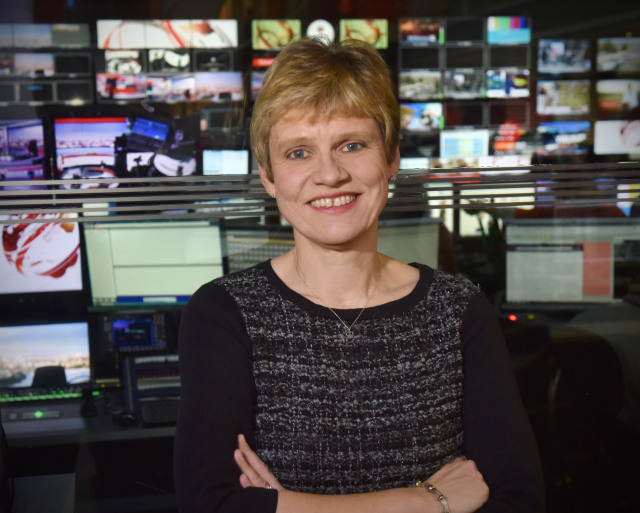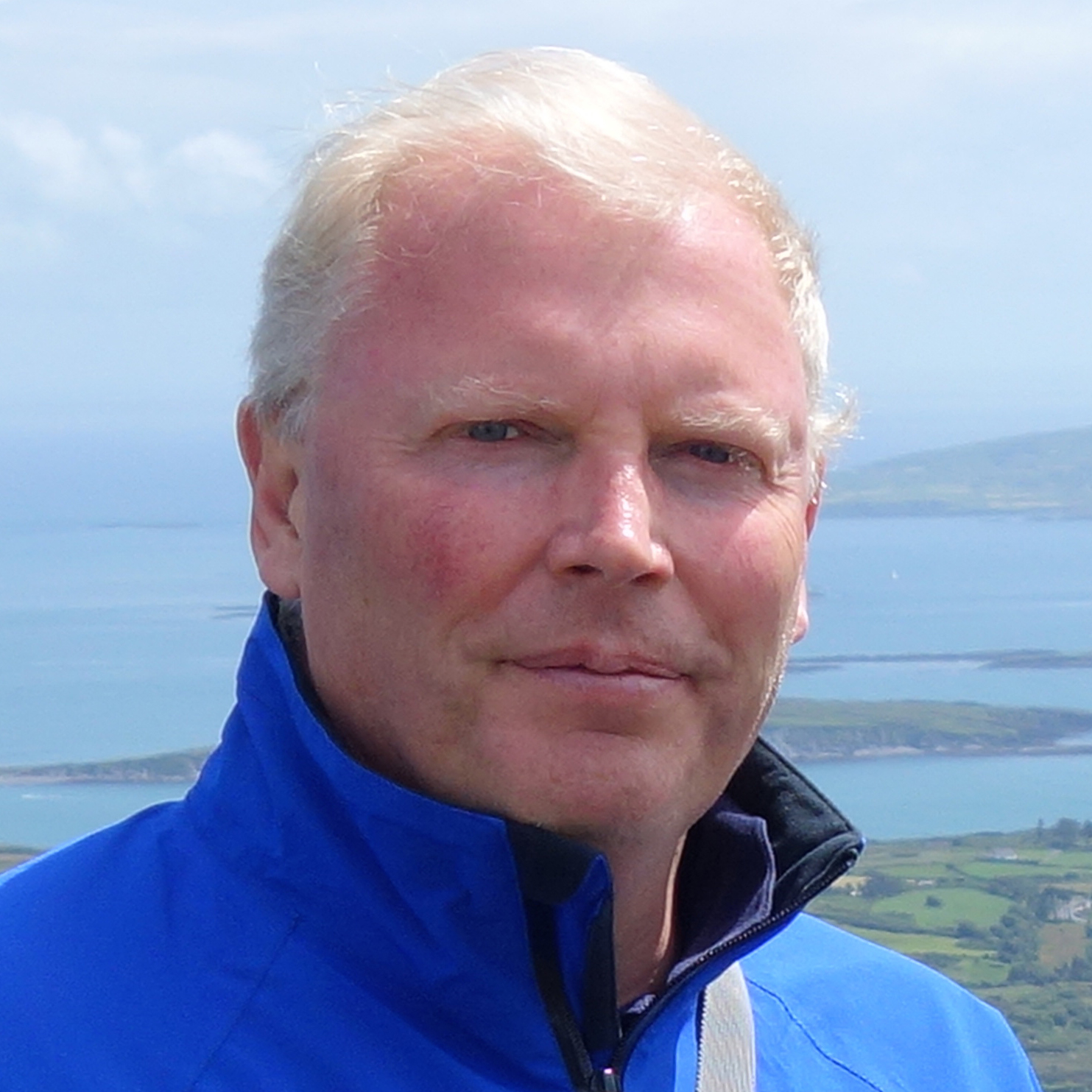Morwen Williams is Head of UK Operations for BBC News, leading the technical and studio teams of BBC News and managing the resources to support this work. She is responsible for creative and technical newsgathering for stories as well as all news studios in London and Salford at MediaCity, and manages a team of more than 700 people.
Williams is also Chair of the World Broadcasting Unions International Media Connectivity Group. The WBU-IMCG works with broadcasters, satellite and fibre service providers and vendors in providing global solutions to common exchange of content and operational problems on any platform.
During the recent IABM BaM Live! Virtual event, IABM Head of Digital Ben Dales spoke to Morwen Williams about the challenges BBC News faced with moving to remote working, new technologies used during the COVID-19 crisis, and purchasing priorities for 2021.

She was first asked to go back to the start of the crisis in March, when consumer demand for news soared yet supply of that news contracted as news providers were required to close down their buildings and figure out how to work in completely new circumstances with social distancing applied throughout.
“The flexibility to do anytime-anywhere production is clearly what we need going forward. That has got to be the key priority.”
MORWEN WILLIAMS, HEAD OF UK OPERATIONS, BBC NEWS
“Well it was about trying to keep our staff safe while keeping our audience demand satisfied, as the appetite for news reached an all-time high. It was really difficult, and right back in March and April we clearly had to make it up as no-one had ever done anything like this.
“So it was initially about automatically working from home. We had some great teams who had the foresight to rig some presenters’ homes before lockdown. But there were others who were isolating, so we literally had to drop stuff off at the door and then stand outside a window on a phone and point, getting presenters to put their own studios together,” said Williams.
“It was not without its challenges. And back at base it was about social distancing so that meant Perspex screens everywhere and we had to take out certain roles to make the galleries were COVID-safe. Throughout the whole of lockdown we didn’t have vision mixers on any of our TV programs, because we had to take out one of the positions to keep the two-meter rule. So all those sorts of things were huge challenges, just to see how you can deliver something that’s safe.
“And how do you now do editing on the ground, when you were used to all piling into the back of an edit vehicle to deliver something? So you would sit next to each other in car parks with windows open in challenging weather, and try and put pieces together that way.
“It is amazing that we did meet all those news bulletins, extra programming and all sorts of things. Yes we did take some programs off-air for a little while, just to give us the flexibility in case staff went sick — but luckily not many did,” she said.
How to Do This and Keep Audiences Served?
It’s a well-worn phrase now that necessity is the mother of invention, but that’s exactly what drove many of the innovations news teams have had to put in place throughout 2020. What sort of innovations did BBC News introduce, asked Dales, and how many of them will remain in place when the pandemic passes and news teams can go back to work in headquarters buildings?
“We’ll all use Zoom and platforms like that a lot more. It just means you can get a greater variety of people on-screen. That had its own challenges, and far more technical people than I will know it’s do with the bitrate on how Zoom comes over. So our really clever teams developed a way to pull that in, to make sure it did look right on television — something our teams called Two Can.
“Also for our radio discussion programs, if everything is coming over the internet you can have delays and variable quality so our teams developed something called Pre Rec, where you had the computer source send the track over for pre-recorded programs,” said Williams.
“And then clearly what we really missed were our audience programs, so we developed something called Virtual Audience. Those audiences were then able to play into presenters’ ears so they could get the feedback they would have done. This was not particularly for news programs but for some of our participation programs and comedies: when the airwaves went quiet with no audiences for a little while, then we were able to give them their audience back.
“So, terrific innovation came through our teams during this lockdown by thinking ‘how are we still going to do this and keep our audiences served?’ Hats off to them.”
It’s also pretty amazing how fast those changes were able to happen. These weren’t months-long processes, were they? BBC News teams were pretty fast in making those changes.
“We didn’t have time to think about it or to road-test some of these things – in the sense of the constraints you would normally be under in bringing a product to market. We just did it because we needed to, in order to keep everything going.”
Flexible and Sustainable: Cloud Production and Home Working
Dales then moved on to discussing workflows. News now travels at the speed of light due to the impact of digital, obviously exacerbated by the recent pandemic. How have the workflows at BBC News adapted to this new speed and instant impact?
“We’ve worked out that everything really needs to be cloud-based. When people moved out of our building pretty sharply in the middle of March we realized that some things could only be done in the building, but the more things that could be done outside the building — the old anytime-anywhere scenario — is where we’re now going.
“We’re moving our processes towards the cloud, so whether you’re at home, in a big BBC building, or abroad somewhere; wherever you are, you should be able to look and work and feel like you’re doing the same processes. That’s what we’re aiming for. We haven’t got there immediately, but this pandemic has made us realize that that’s the way we need to go,” she said.
Finally, what are your top priorities for technology sourcing in 2021?
“Well again I think it’s got to be about flexibility and adaptability. Those are the key things, as well as being sustainable — which clearly is a big driver for us. But I repeat: the flexibility to do anytime-anywhere production is clearly what we need going forward. That has got to be the key priority: something that can be scaled up, remotely — these are the words we’re all using now.
“And I just think we have to have that in our minds. We just don’t know: this came out of the blue, and we just don’t know when we will need it again.
“But actually some of us have adapted quite well to these different ways of working, and people are saying they want a more blended way of working, with some home and some in the office. And then others just want to work from home.
“We’ve got to be able to gear up for that, and so I think products — and the people we will work with — need to reflect that and have those elements, as well as sustainability, in their products going forward,” said Williams.


